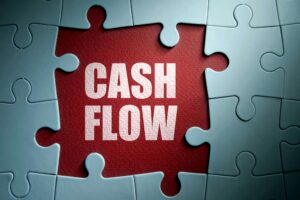10 Common Miscellaneous Expense Deductions HowStuffWorks

Such items necessary for the operation of your services, like small tool expenses, can be categorized as miscellaneous expenses. Typically, tools with a life span of one year or that are worth less than $200 would fall into this category. Small, periodic or one-off costs for clothing required for your work, such as a uniform or protective clothing, could be considered for deductions. However, these misc clothing expenses can only be written-off in certain instances, as dictated by the Canada Revenue Agency. A tax deduction could be made for work clothes required for safety reasons, such as PPE wear. A line item with the miscellaneous expense designation is commonly used in the income statement, and aggregates the amounts of several minor expense accounts.
Invoice Software For
- The consolidation of miscellaneous expenses into a single line item in financial statements can sometimes obscure the nature of these costs.
- Miscellaneous expenses are an array of small transactions that don’t fit within the ledgers’ specified accounts.
- If a policyholder exceeds the limit for miscellaneous expenses, they will be responsible for paying the remaining costs out of pocket.
- They support a business’s operations, though they aren’t required for the direct production of products or services.
- Discretionary expenses, on the other hand, are those that are not essential for the day-to-day operations but may contribute to the overall well-being of the organization.
- With Alaan, we automate ledger entries and sync expense data with popular accounting software like Xero and QuickBooks, taking the manual effort out of recording miscellaneous expenses.
This practice allows businesses to stay agile and responsive to market changes, regulatory updates, and evolving cost structures. By regularly evaluating expense policies, companies can identify loopholes and potential avenues for cost-saving measures. Office supplies constitute a common miscellaneous expense for businesses, encompassing a wide array of items essential for daily operations and often categorized as unexpected business costs. With a clear understanding petty cash of how to record and categorise these costs, the next step is to explore best practices for managing miscellaneous expenses. Now, let’s explore the accounting treatment for miscellaneous expenses, ensuring your records are accurate and ready for tax reporting.
- Reviewing miscellaneous expenses helps identify patterns, allowing businesses to manage costs better.
- If you have a home office, you can deduct interest on your home mortgage as an expense related to the business use of your home.
- Expense management software can automate the tracking and categorization of miscellaneous costs, flagging outliers and providing real-time data that can inform spending decisions.
- By carefully tracking and analyzing these costs, businesses can find places to save money and make changes to stay profitable.
- Only cases resolved after October 22, 2004, qualify for this deduction, and the deduction amount is limited to the settlement or judgment amount included as income.
What is a Miscellaneous Expense in Accounting? – FAQs

Understanding what qualifies as a miscellaneous expense helps businesses categorise and track these miscellaneous expenses small, irregular costs more accurately. In the next section, we’ll explore common examples of miscellaneous expenses, giving you a practical guide for recognising these costs. By tracking and categorising miscellaneous expenses, you gain control over your finances, maximise tax benefits, and uncover cost-saving opportunities.
Include them in the budget
- They typically cover small, non-recurring expenditures, such as items bought for the office, business trips, and other similar fees.
- This helps keep them separate from main expense categories like salaries, rent, or inventory, making it easy to track their impact without cluttering primary accounts.
- Detailed financial record-keeping plays a pivotal role in substantiating these expenses during tax filings and audits, highlighting the importance of maintaining organized and transparent financial records.
- In businesses, these may include things like minor repairs, work-related software subscriptions, or employee reimbursements for small purchases.
Lawyers can deduct their bar fees and doctors their medical association dues, for instance. But quite a few other organizations also fall under the umbrella of dues you can deduct. If you belong to trade organizations — or any professional group that helps you carry out your job — you can feel comfortable deducting fees. For instance, in the example above, if the company has the regular transaction of the bank service charges, it should have an account that is named “bank service charges” and record that $30 into it. After this journal entry, total expenses on the income statement will increase by $30 while the total assets on the balance sheet will decrease by $30. Sundry Expenses are a regular business expense line item found in the Income Statement of all organization.

Categories That Do Not Qualify
His vision is to deliver top-tier financial solutions globally, ensuring efficient financial management https://www.bookstime.com/ for all business owners. Accurate record-keeping is essential for proving that each expense meets IRS criteria for deduction. The IRS requires documented evidence for every deductible expense to ensure it aligns with eligible categories.




